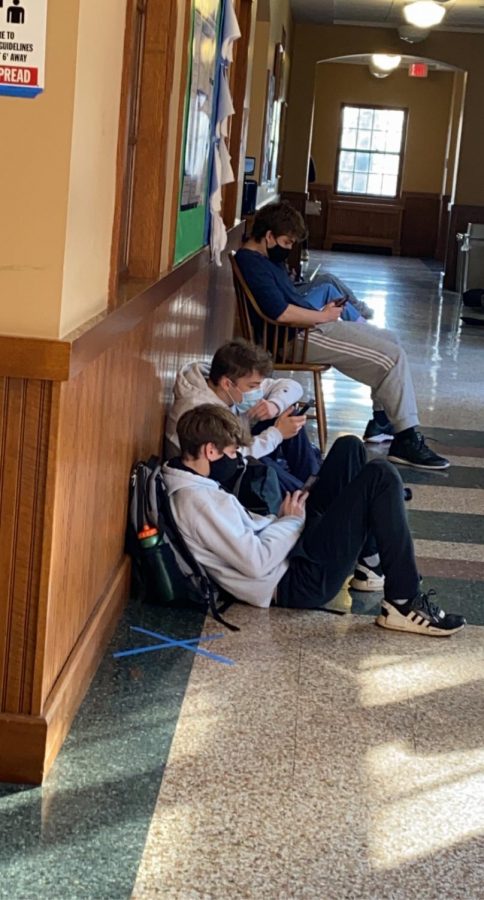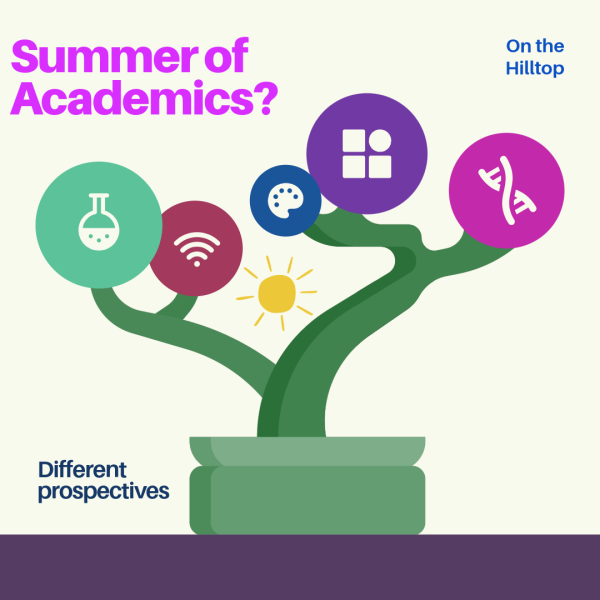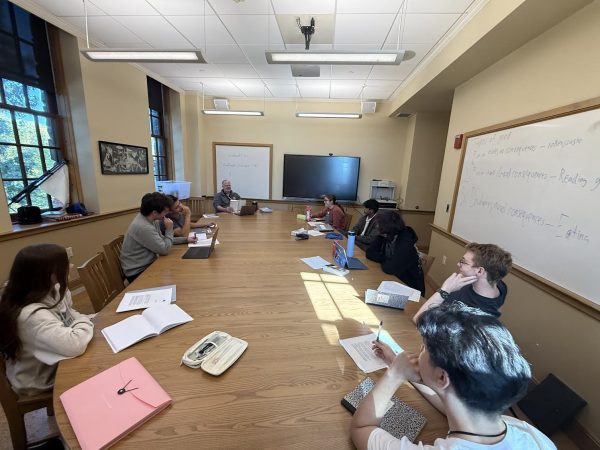Movie Review: The Social Dilemma
The Dangers of Social Media: A Peek Behind the Curtains
The Scary Truth behind Social Media
by Theo Saujet
“The Social Dilemma” is an influential and jaw-dropping documentary that illustrates the forceful control that social media possesses over the human mind and activity. The documentary draws back the curtain, revealing the “behind the scenes” of social media and presenting the viewer with a true yet unfortunate reality.
Over the last couple of decades, technology and social media have grown and developed from a platform into an empire. With over 4 billion people in today’s world actively using social media, it has gradually created change on the planet. From reconnecting friendships and allowing creators to engage with much larger audiences to even finding organ donors, social media has brought fundamental, positive change to society. Over time however, society has grown naive to the potential power these platforms have. Social media has grown out of control, overwhelming human strengths to the extent of sparking addiction, polarization, and radicalization. It controls human nature and has become a burden on human lives. The recently released Netflix movie,“The Social Dilemma”, highlights the negative effects of social media and the subconscious control it has over the human mind.
The truth is that social media companies hold an overwhelming amount of power: according to Tristan Harris, President/Co-Founder Center for Humane Technology, “50 designers[…] make decisions that would have an impact on 2 billion people.” This allows them to easily shape and influence society. As these social media companies gradually gain control, they subconsciously trap us into their world, creating issues that must be addressed before it is too late.
To explore the truths and intentions behind social media companies, one must first understand the dynamic between the product and consumer in this scenario. What is the product? What are social media companies selling? Well, “if you are not paying for the product, then you are the product” (Tristan Harris). Advertisements play the role of the consumers, paying social media companies to be featured on their pages. The social media companies are thus selling their products – or your attention – to companies.
Therefore, as Tristan Harris explains in the documentary, social media’s “business model is to keep people engaged on the screen.” Companies like Instagram and Tik Tok are constantly competing against one another for peoples’ attention. More attention results in more time spent on their app and therefore ads pay these companies more money to be featured on their pages.
To accomplish this, according to former Twitter Executive Jeff Seibert, social media companies are also monitoring and recording “every single action you take” – “exactly what image you stop and look at, for how long you look at it” – to ultimately develop and construct a formula that will capture as much of your attention as they possibly can get. This business model however is not fixed, as it is constantly being adjusted and changed according to your behavior.
“They know when people are lonely, they know when people are depressed, they know when people are looking at photos of their ex-romantic partners,” (Jeff Seibert) and they will change your feed accordingly. This is an invasion of privacy, one of the many immoral flaws of social media.
As social media companies have mastered the way to control and activate different parts of your brain, they have subliminally made you a slave to their apps. “How much of your life can we get you to give to us?” Why do you think when someone tags you in a photo on Instagram the photo does not appear on the notification? That feature was set to intentionally lead users to click on the app to see what the tagged picture was, and therefore they will spend more time on the app. Why do you think Snapchat uses the “is typing…” notification rather than just show the message itself. That is also a design feature created by Snapchat that grabs users’ attention and leads them to click on the app. These social media companies are now crossing the line of ethics and morals carelessly as they are so absorbed in their competition with other companies. However, the power social media companies possess does not just end there.
As established before, the feed that you see scroll through every day – whether it is Instagram, Tik Tok, Snapchat “discover” stories, Twitter, etc. – is constructed differently based on the behavior of the person. Not only does every person see different things on their feeds, but these social media companies also categorize people based on their preferences.For example, if you are a dog lover, these social media apps will design the feed you scroll through and categorize you with other dog lovers. Therefore, when you tap on a post to see the comment section, you will see people that love dogs as the top commentators (an athlete on the contrary would see other athletes as top commentators). Social media apps have built these own individual realities around their uses. The user will therefore not face as much polarization and disagreement in his/her feed since that feed is built around people with the same beliefs and interests.
However, every time that person drops their phone and escapes this reality back into the real world, the diversity of beliefs and opinions is shocking to them. The documentary also claims that there has never been this much political polarization over the past 20 years than ever before. Do you think this is a coincidence? No, social media plays a pivotal role in developing that issue.
As social media and technology’s influence grow more and more into people’s daily lives, we must be properly aware of its dangers and effects. The movie “The Social Dilemma” does a great job in educating its viewers on the risks of social media – especially during our current circumstances with COVID-19, as more people find themselves scrolling through their feeds more than usual due to boredom (since other activities are canceled), it could not be a better time to watch!
How much time do students spend on screens?
by Niky Dhakad
 Technology is constantly advancing and our lives demand the use of screens to socialize, learn, work, and entertain. Along with these benefits, increasing screen time can affect students’ stress levels and mental health. To analyze more in-depth, we conducted a survey, correlating screen time to stress levels.
Technology is constantly advancing and our lives demand the use of screens to socialize, learn, work, and entertain. Along with these benefits, increasing screen time can affect students’ stress levels and mental health. To analyze more in-depth, we conducted a survey, correlating screen time to stress levels.
This survey shows that students in the community are split between very stressed and mildly stressed. Slightly more than the majority of the students who responded feel mildly stressed, slightly busy, however still maintain a healthy sleep schedule and keeping up with their extracurriculars; 43% of students feel that they are very stressed, anxious, struggling to keep up with homework and their extracurricular activities and maintain a healthy sleep schedule on a nightly basis. These stress levels could be a result of the home environment, rigorous work, or possibly subpar time management. To answer this question, we surveyed the same students regarding their daily screen time.
 This survey shows that the majority of the community spends 5-6 hours on their phones daily. The next highest percentage is 22.8% at 3-4 hours per day, followed by 19.6% at 7-8 hours a day, and lastly 18.4% at more than 8 hours a day. According to the Washington Post, tweens and teens spend between 4 and 7 hours on their phones per day. The majority of the Hackley community meets or goes beyond this average daily.
This survey shows that the majority of the community spends 5-6 hours on their phones daily. The next highest percentage is 22.8% at 3-4 hours per day, followed by 19.6% at 7-8 hours a day, and lastly 18.4% at more than 8 hours a day. According to the Washington Post, tweens and teens spend between 4 and 7 hours on their phones per day. The majority of the Hackley community meets or goes beyond this average daily.











